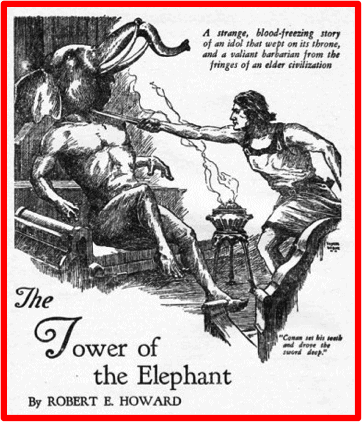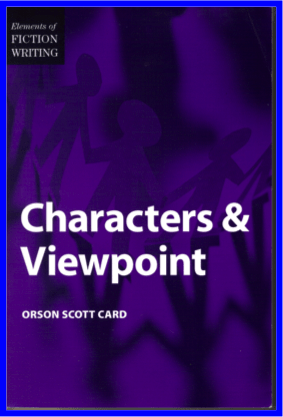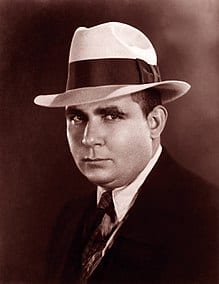This is the second in a series of story structure blog posts analysing Robert E Howard’s celebrated story, ‘The Tower of the Elephant’. In this post, I look at two ways of categorising stories and apply these to Howard’s story of his hero, Conan, attempting to steal a fabled jewel. The first post, which gives the background to this series and summarises the story for those who have not read it, is available here.
______________________________________________________
Type of Story
Before I read fantasy I read science fiction and one of my favourite writers was A E van Vogt. A few years ago I was reading an interview he gave in 1979 (‘A.E. van Vogt: A Writer with a Winning Formula’) and found out about the book he had used to learn his craft. The Only Two Ways to Write a Story was written by John Gallishaw and published in 1928. This book claimed that stories are either about Accomplishment or about Decision, and each type of story has certain structural elements both for the overall story arc and for each scene. Of course, nowadays we might claim there is at least one other sort of story, the slice-of-life, and possibly the extended prose-poem, but certainly in the early twentieth century, especially in the pulps, Gallishaw’s insight had merit.
A story of Accomplishment is about a main character trying to achieve a goal, whereas a story of Decision has a character trying to make a decision about something of importance. ‘The Tower of the Elephant’ is clearly an Accomplishment story—the goal being the robbery of the Elephant’s Heart. A story of Accomplishment normally ends with the protagonist having achieved the goal or having failed in the attempt. While it appears Conan fails in his goal of stealing the gem, this original goal was subsumed by a greater one, which he did not know about at the start of the story. In fact, the story becomes one of a Decision—Does he steal the gem or help Yag-kosha?—and once the decision is made, the story changes trajectory.
Having written ‘The Tower of the Elephant’ before the publication of Gallishaw’s book, Howard could not have known about Gallishaw’s Method, He has, however, subverted Gallishaw’s insight, by having the protagonist’s goal over-ridden by events within the story. In the end, while Conan may not have obtained a treasure, he achieved a greater good: the freeing of ‘a demon of the Elder World’. And through this act, Conan gained a different type of treasure: psychological insight.
______________________________________________________
The MICE Quotient
Another way of looking at story categories is in Orson Scott Card’s book Characters & Viewpoint. Card suggests there are four types of stories:
- Milieu: A character comes into a new world of some sort and the story follows his or her encounter with that world from the moment they encounter it. The story finishes when the character either is acclimatised to the world or leaves it. My sub-title for this type of story is Explore.
- Idea: A character investigates a mystery (as in crime stories). The story begins when the mystery is presented and ends when it is solved. The obvious sub-title is Solve.
- Character: A character decides to change their role in the social world they inhabit, with the story being about how the character and that world deal with the change. The story begins when the character starts the change and ends when the world has accommodated the change in the character or the character leaves that world because it won’t change. Rite of passage stories fit into this category, which I would sub-title Grow.
- Event: The world has suffered a rupture or an unwanted change and the protagonist(s) must address the situation. The story begins when the change/rupture occurs and ends when it is resolved in some way. The Lord of the Rings is a classic Event novel, though it also has aspects of the Milieu story, in that the journey to Mordor takes the hobbits through a new world, the environs of Middle Earth beyond the Shire. The Event category would be sub-titled Repair.
‘The Tower of the Elephant’ could be categorised as an Event story, with elements of Milieu, Idea and Character, as explored below:
- Milieu: The world of Yara’s tower, which Conan does explore, though this element is relatively minor compared to the others.
- Idea: Conan’s quest begins as an attempt to solve the ‘secret’ of the tower, and the story ends when the secret is disclosed, the mystery solved. The Elephant’s Heart belongs to Yag-kosha (also known as Yogah of Yag), an otherworldly creature, and this creature enacts revenge on his captor, the high priest Yara, with the result that the tower, which Yag-kosha created ‘in a single night’ for Yara, collapses.
- Character: In many respects, ‘The Tower of the Elephant’ is an adventure/action story and generally we don’t expect characters in such stories to change, to grow. (Think of Sherlock Homes, James Bond, and most action heroes and superheroes in blockbuster movies.) Conan begins his quest by treating it as an adventure, and his actions determine its trajectory. However, he does not succeed in this adventure. What he does succeed in doing is learn about himself. Conan may not have intended to change his role in ‘his world’, but even though he remains the young, reckless warrior at the end of the story as he was at the start, he has discovered something more than ‘will and might’ in his makeup. He has discovered pity, which over-rode all considerations of greed and pride. He has grown. Thus, we can then see the events of ‘The Tower of the Elephant’ as a type of ‘rite of passage’ for Conan, in that, through encounters with himself and the mysteries of the world, he has become a more mature person.
- Event: The rupture to the storyworld that needs repairing is the enslavement of the whole kingdom of Zamora by the high priest, Yara, which came about because of the capture, imprisonment and abuse of Yag-kosha by Yara. Whether through Conan’s own desires or through Yogah using its magic to influence those desires, Conan, while pursuing his own (apparent) personal goals, finds himself in a position to help Yag-kosha achieve its own personal goals. Once Conan frees the idol by killing it and carving out its heart to drip its blood on the gem, Yogah of Yag, which Yag-kosha has become again, is free to enact revenge on Yara. The rupture to the world is repaired. Yogah returns to his former form—‘a green shining winged figure…no longer blind or crippled’—the tower collapses, and Zamora is rid of its oppressor.
I hope you enjoyed this analysis. I realise these two methods tend to the descriptive rather than the prescriptive, but I do feel that an awareness of such tools might help readers understand what is going on and help writers in their planning processes, whether these be detailed outlines or ‘random’ musings before plunging into putting words on the page.
Stay safe and sane in the midst of this COVID-19 madness!
Cofion Cynnes (Warm Wishes)
Earl
______________________________________________________






One Comment